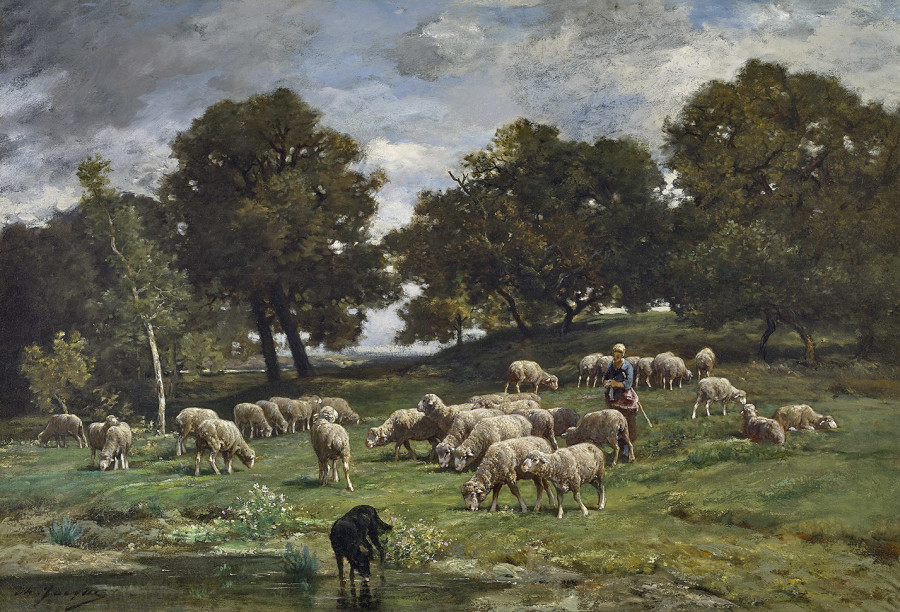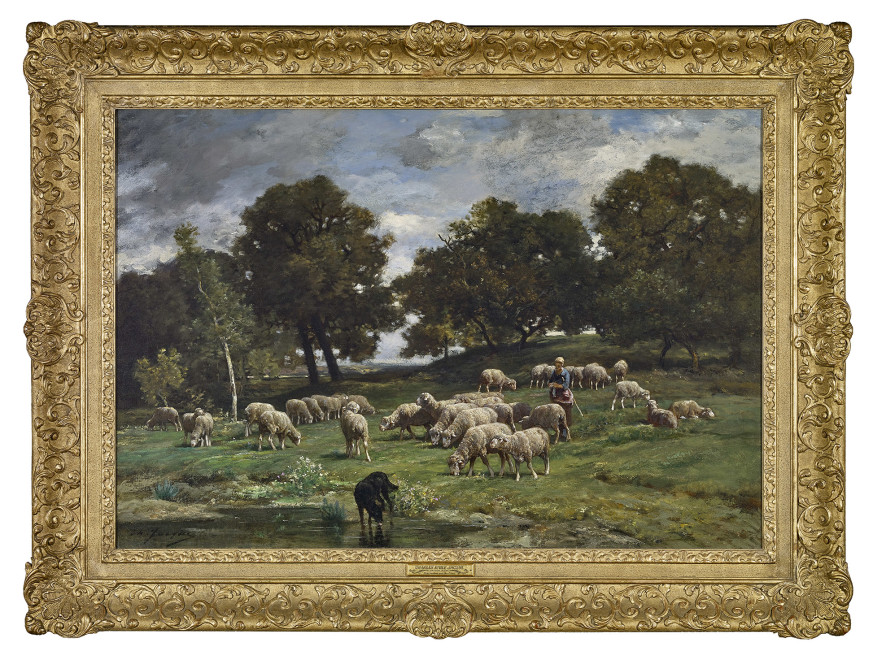While not as well-known today, during the 1860s Jacque’s international fame and financial success far exceeded that of Millet or Rousseau.
Provenance
Alfred J. FisherDetroit Institute of Arts (bequeathed by the above and sold: Sotheby's, New York, November 3, 1999, lot 17)
Private collection (acquired at the above sale)
Sale: Sotheby's, New York, April 25, 2006, lot 150
Acquired at the above sale by present owner
Exhibited
Washington, D.C, National Collection of Fine Arts, American Art in the Barbizon Mood, 1975, no. 7Southampton, New York, The Parrish Art Museum, New York, National Academy of Design, In Support of Liberty: European Paintings at the 1883 Pedestal Art Loan Exhibition, 1986, no. 41
Literature
Paintings in the Detroit Institute of Fine Arts, third edition of the checklist, 1970, p. 78Catalogue note
Charles Jacque moved from Paris to Barbizon with Jean-François Millet in 1849. Although Jacque arrived in the rural village primarily as a printmaker and as a sometime chronicler of peasant life, he developed into one of the principal animaliers of 19th century France, especially sought after for his depictions of sheep and lambs, with one critic calling him the “Raphael of the sheep barn.” Interestingly, while not as well-known today, during the 1860s Jacque’s international fame and financial success far exceeded that of Millet or Rousseau.
Jacque’s paintings of shepherdesses sheltering their flocks in the shadow of the great oaks of the Forest of Fontainebleau have become one of the trademark images of Barbizon painting. In our work, a young shepherdess, staff in hand, guards a large flock in what appears to be a beautiful spring day, judging from the verdant fields and wildflowers. This was a labor usually relegated to young girls and here she is not only the keeper of her flock, but also catches up on her knitting! This is a scene that Jacque clearly observed as he walked the fields and forests around Barbizon.




